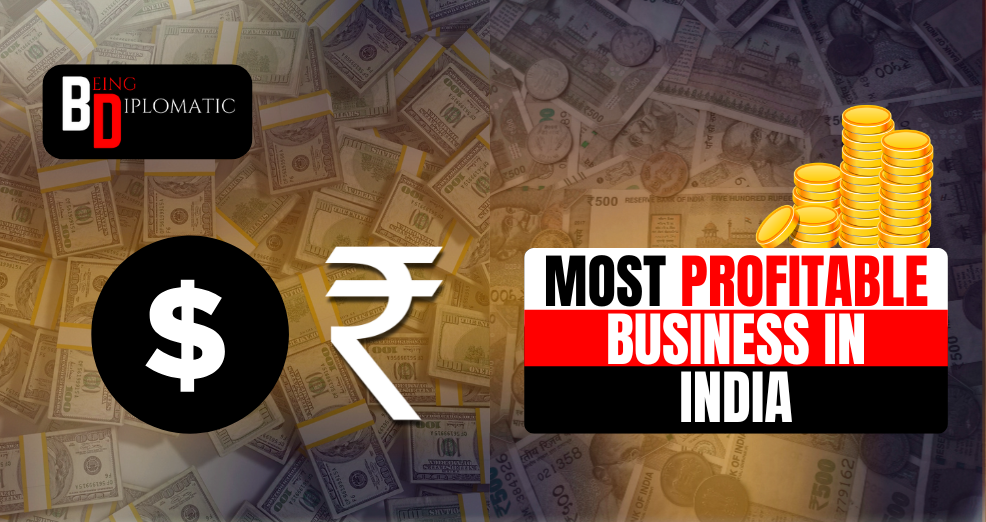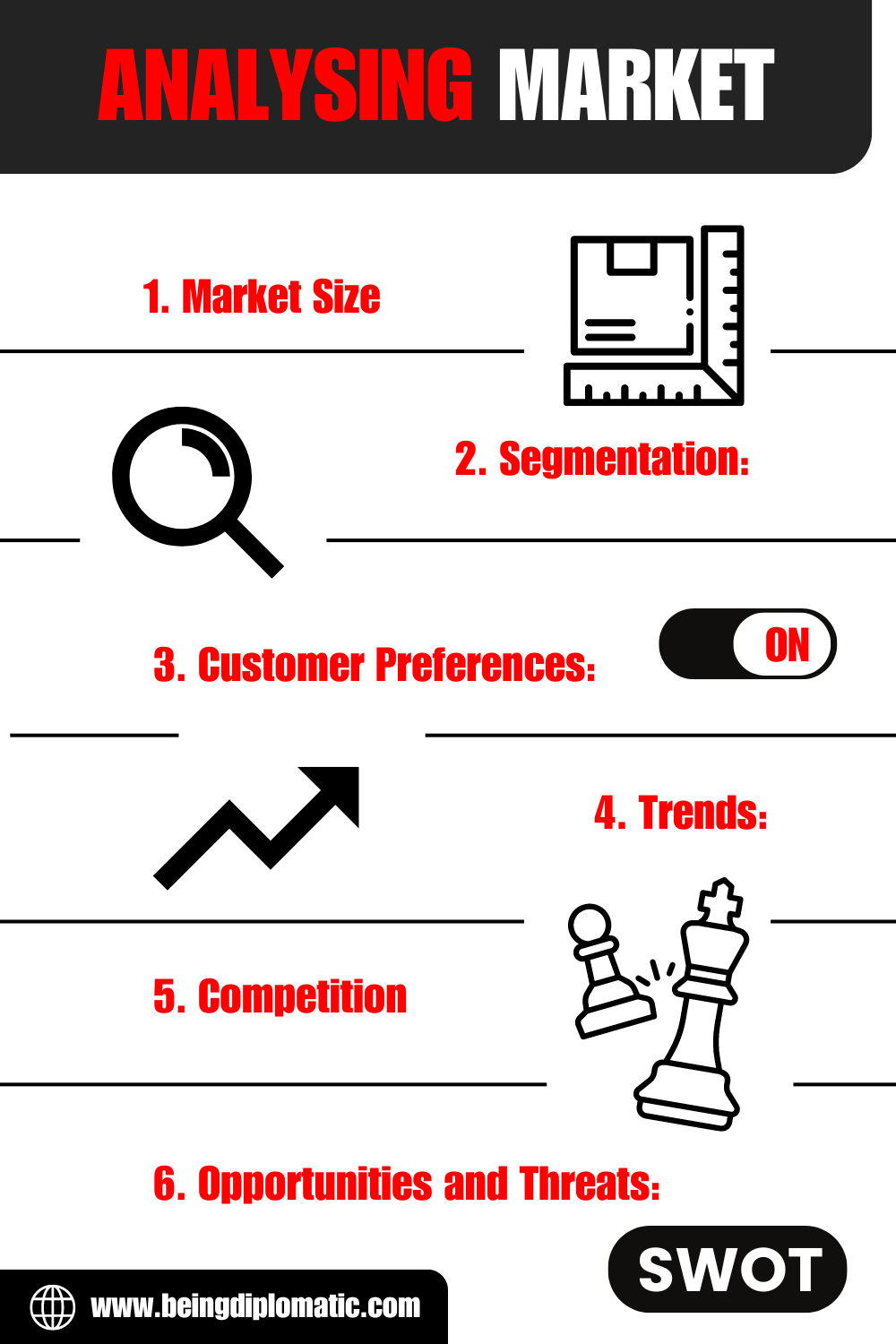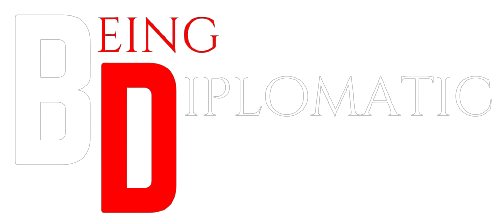
Most profitable business in India, and how to utilize the market potential which is exploding right now. Being the second-largest consumer market with such good political stability India is a fast-growing economy. Nowadays everyone wants to invest in.
Whether it’s a native Indian or any other person across the world everyone doesn’t want to miss the opportunity.
In this article, we’re going to cover the businesses that are profitable in the Indian market.
Therefore these are some of the best to start if you are planning to start a business within the Indian market.
Also, we’ll cover what are the factors responsible for the profitability of any business which is very common for all businesses.
Lastly, some tips will help you better grip your business and the current market so that you can perform well, right from the very start.
Factors Affecting Business Profitability
Factors affecting business profitability in India are-
1. Cost Management: Efficient management of costs, including raw materials, labor, and overhead expenses, directly impacts profitability.
2. Pricing Strategy: Setting competitive yet profitable prices that reflect market demand and position relative to competitors.
3. Sales and Revenue Growth: Increasing sales volumes or average transaction values can boost profitability if costs are managed effectively.
4. Market Demand: Understanding and responding to customer preferences and trends to ensure products or services remain in demand.
5. Operational Efficiency: Streamlining processes and workflows to reduce waste, improve productivity, and lower costs.
6. Economic Environment: External factors like economic cycles, inflation rates, and interest rates can impact costs and consumer purchasing power.
7. Competitive Landscape: Monitoring and responding to competitors’ strategies to maintain market share and pricing power.
8. Financial Management: Effective management of cash flow, investments, and debt to optimize financial resources.
9. Regulatory and Legal Factors: Compliance with regulations and laws affecting operations and costs.
10. Technological Advancements: Leveraging technology to innovate, automate processes, and improve efficiency.
Environment for a profitable business in the Indian context
What is the environment for a most profitable business in India?
The business environment in India is complex, with both opportunities and challenges. On the positive side, India offers a large and growing market, a diverse economy, and a favorable business climate, making it an attractive destination for investment. The country also provides advantages such as cheap labor and a history of international trade. Additionally, India has a rapidly expanding middle class.
Most profitable business in India
Most profitable businesses in India include eCommerce, online marketplaces, wholesale businesses such as furniture, jewelry, gym equipment, cosmetics, and office supplies, as well as small business ventures like breakfast joints, juice points, and tailoring shops
Logistics business
Logistics means managing the flow of goods, services, and information between the point of origin and the point of consumption to meet customer requirements
Regional product
Regional products have been Focused on products within the logistics business involves managing the transportation, storage, and distribution of goods that are specific to a particular geographical area.
This can further have two types:
Local produced with available resource
Some profitable businesses in India that involve locally produced goods using available resources include agro-based manufacturing, spice industry, agarbatti manufacturing, and commercial dairy production. These businesses utilize India’s rich agricultural resources and locally available materials, offering high growth potential and market opportunities. Additionally, manufacturing one’s product can capture a large share of the market and yield high profits. Other profitable business ideas in India that utilize local resources include flour mills, fertilizers and pesticide stores, and poultry farming
High-demand-based local business
In India, various high-demand local businesses have the potential for growth and profitability. Some examples include freelance content creation, dropshipping, blogging, and vlogging. Additionally, real estate, consumer goods, and healthcare are sectors that have shown significant growth and demand. Furthermore, startups and small businesses in India have the potential to create jobs and contribute to the country’s economic growth. Information is missing on specific local businesses with high demand in different regions of India.
Manufacturing – profitable business
Manufacturing is the process of producing goods on a large scale using labor, machines, tools, and chemical or biological processing
DTC
DTC (Direct-to-Consumer) is a business model where companies sell products or services directly to end consumers, bypassing traditional retailers or middlemen, allowing for control over the customer journey and personalized interactions
B2B
B2B (Business-to-Business) refers to commerce, transactions, marketing, and other aspects of e-commerce between two businesses, where companies create products and services for other businesses, such as manufacturers for wholesalers and wholesalers for retailers
Intermediaries
An intermediary is a person, organization, or entity that acts as a mediator, agent, or medium between two or more parties, facilitating transactions, negotiations, or other interactions
Marketing-based production outsourcing
Marketing-based production outsourcing refers to the practice of enhancing both the production of goods or components and specific marketing functions to external parties, allowing companies to focus on their core competencies while reducing costs and accessing specialized expertise
Repairing
repairing refers to the act or process of identifying defects, damages, faults, or failures in products, equipment, or assets to restore their functionality and extend their useful life
Second-hand Reselling
A second-hand item refers to a product or asset that has been previously used, owned, or operated by someone else, and is now being sold, traded, or transferred to a new owner, often at a lower price than its original value.
Travel and tourism
Travel and tourism is a dynamic and multifaceted industry that involves the movement of people to destinations outside their usual environment for leisure, business, or other purposes
- General transportation based: The use of transportation depends upon our need to move things from the place of their availability to the place of their use. Human beings use various methods to move goods, commodities, and ideas from one place to another.
- Niche-based tourism: Where you target tourism based on a specific place or type of people to visit for example; Adventure, Beach, Foreign, Historical, or Yatra, etc.
Other than these some more profitable businesses in India also includes:-
- Event management
- Handicrafts export
- IT services
- Photography & Videography
- Documentary
- Wedding
- Business & ad shoot
- Health care and education
- Retail stores
- Franchise
- Self-owned
- Commission-based service business
- Farming
- Food / Beverage / Drinks stalls
- Classes and coaching
- Agency based business
- Drive on demand
:- 2 wheeler app based
:- 4 wheeler app based - Self-created
- Designing business
- Interior design
- Graphic design
- Fashion industry
- Paintings & arts
- Import
- Export
Tips to bring profitability to any business in India:
Scan environment
Scanning the environment involves analyzing various aspects such as market conditions, competition, customer preferences, technological trends, regulatory landscape, and economic
Identify the demand
Demand refers to the desire or need for a product or service in the market, backed by the willingness and ability of customers to pay for it. In other words, it’s how much people want something and are ready to buy it. High demand means many people want it and are willing to pay for it, while low demand means fewer people are interested.
See the market
To “see the market” means to understand its dynamics, which involves:
1. Market Size: Assessing the total potential customers and revenue.
2. Segmentation: Identifying distinct customer groups based on characteristics.
3. Customer Preferences: Understanding what customers value and their pain points.
4. Trends: Keeping track of current and emerging trends, technological advancements, and regulatory changes.
5. Competition: Knowing the main competitors, their strengths, and their market positioning.
6. Opportunities and Threats: Identifying potential growth opportunities and risks that could impact the market.
4. Adapt according to the market
Adapting to the market involves adjusting your business strategies and operations to meet changing market conditions, customer preferences, and competitive landscapes
5. Marketing is an investment not an expense
Marketing should be viewed as an investment rather than an expense because it generates returns by driving business growth and profitability
Some Key features of these most profitable business are:
1. High Demand: Continuous and growing demand for their products or services.
2. Large Market: Access to a vast domestic market and potential for exports.
3. Innovation: Investment in technology and innovation to stay competitive.
4. Scalability: Ability to expand operations and increase production efficiently.
5. Strong Brand: Well-known and trusted brand names that attract customers.
6. Regulatory Support: Favorable government policies and support.
7. Skilled Workforce: Access to a pool of skilled and educated employees.
8. Financial Strength: Strong financial health with good profit margins and cash flow.
Here a question may pop out that
Why do these businesses make a profit??
The answer is
These businesses make a profit due to several key factors:
1. High Demand: They offer products or services that are in constant demand, ensuring steady sales.
2. Economies of Scale: Large-scale operations reduce the cost per unit, increasing profit margins.
3. Innovation and Technology: Investment in the latest technology improves efficiency and productivity, reducing costs and improving quality.
4. Market Leadership: Established brands and market leaders attract more customers, leading to higher sales volumes.
5. Diverse Revenue Streams: They often have multiple sources of income, reducing reliance on a single market or product.
6. Cost Efficiency: Effective management of resources and operations keeps costs low and profit margins high.
7. Export Opportunities: Access to international markets provides additional revenue streams and growth opportunities.
8. Regulatory Support: Favorable government policies, subsidies, and incentives help reduce operational costs and increase profitability.
These factors combined allow these businesses to sustain and grow their profitability over time.

Let us take some examples of most profitable businesses in India
Information Technology (IT) and Software Services
Overview: India’s IT and software services industry is a global powerhouse, contributing significantly to the country’s GDP and employment.
Major Players: Tata Consultancy Services (TCS), Infosys, Wipro
Key Factors for Profitability:
Global Reach: These companies have clients worldwide, ensuring a steady revenue stream from various markets.
Skilled Workforce: India has a large pool of highly skilled IT professionals.
Innovation: Continuous investment in new technologies such as AI, cloud computing, and cybersecurity.
Automobile Industry
Overview: India is one of the largest automotive markets in the world, with a diverse range of vehicles being manufactured and sold.
Major Players: Tata Motors, Mahindra & Mahindra, Maruti Suzuki
Key Factors for Profitability:
Domestic Demand: A growing middle class with increasing purchasing power.
Export Opportunities: Indian-made vehicles are exported to numerous countries.
Government Support: Initiatives like the “Make in India” campaign encourage domestic manufacturing.
Fast-Moving Consumer Goods (FMCG)
Overview: The FMCG sector includes products that are sold quickly and at relatively low cost, such as food, beverages, personal care, and household items.
Major Players: Hindustan Unilever, ITC, Nestlé India
Key Factors for Profitability:
Everyday Necessities: Products are essential for daily life, ensuring constant demand.
Brand Loyalty: Strong brand recognition and loyalty among consumers.
Distribution Networks: Extensive distribution channels ensure product availability across urban and rural areas.
Factors Contributing to Profitability in Business
Economic Growth India’s growing economy boosts consumer spending power, creating opportunities for businesses across various sectors.
Urbanization and Demographic Trends: Rapid urbanization and a young, tech-savvy population drive demand for a wide range of products and services, from housing and automobiles to digital services and consumer electronics.
Digital Transformation: The rise of digital infrastructure and increased internet penetration have opened new avenues for businesses in e-commerce, digital payments, and online services, making them highly profitable.
Global Outsourcing: India is a global hub for outsourcing in IT, customer service, and business process management (BPM). The cost advantage and skilled workforce make this sector particularly profitable.
Healthcare Needs: The growing need for affordable healthcare solutions and pharmaceuticals both domestically and globally ensures steady demand for India’s pharmaceutical industry.
Financial Inclusion: Increasing financial inclusion and digital banking initiatives have expanded the reach of financial services, contributing to the profitability of banks and fintech companies.
Challenges and Opportunities
Infrastructure Development: Continued improvement in infrastructure is crucial for sustaining business growth. While there are challenges, ongoing projects and investments in infrastructure development present significant opportunities.
Regulatory Changes: Keeping up with regulatory changes and ensuring compliance can be challenging but also opens opportunities for businesses that can navigate these effectively.
Sustainability and Environmental Concerns: There is a growing focus on sustainability. Businesses investing in green technologies and sustainable practices are likely to see long-term profitability.
Global Competition: While competition is intense, Indian businesses that innovate and maintain cost advantages can successfully compete in global markets.
Conclusion for a most profitable business in India
India is one of the biggest consumer markets in the world which means that it holds a very great scope for several businesses. Many businesses can be operated in India because of the factors that affect the profitability of the business in India or the factors that say whether a business will do good or not.
We’ve created a list of such businesses that you can do to have a lot of profit in business in India. for sure these businesses hold many challenges and opportunities that you’ve to scan by yourself or with the help of any Research and Marketing agency.
FAQs
Which business earns the most money in India?
Ans- Real Estate Consultant
Which business shop is most profitable in India?
Ans – Pharmacy
Which industry has the highest profit in India?
Ans- There is not a single industry that has the highest profit among all other industries in India but here are some of the top-rated
- Coaching/Tuition Center.
- E-Commerce Business.
- Legal Services.
Which business is in demand in India?
Ans- Social media and marketing teams
Which business gives high profit?
Ans- Interior designing and decorating



